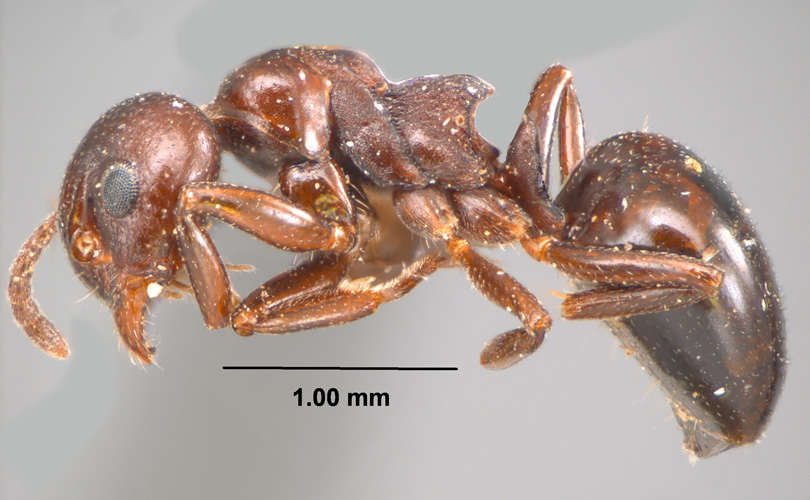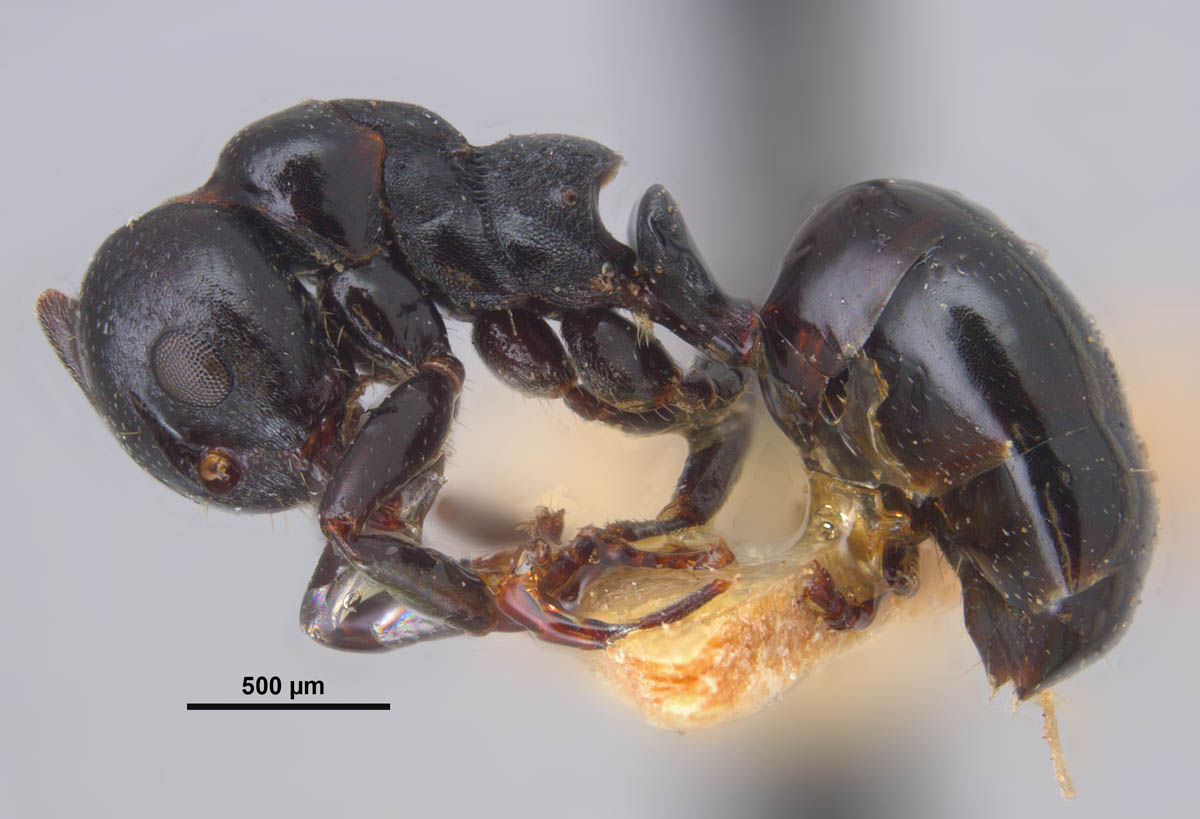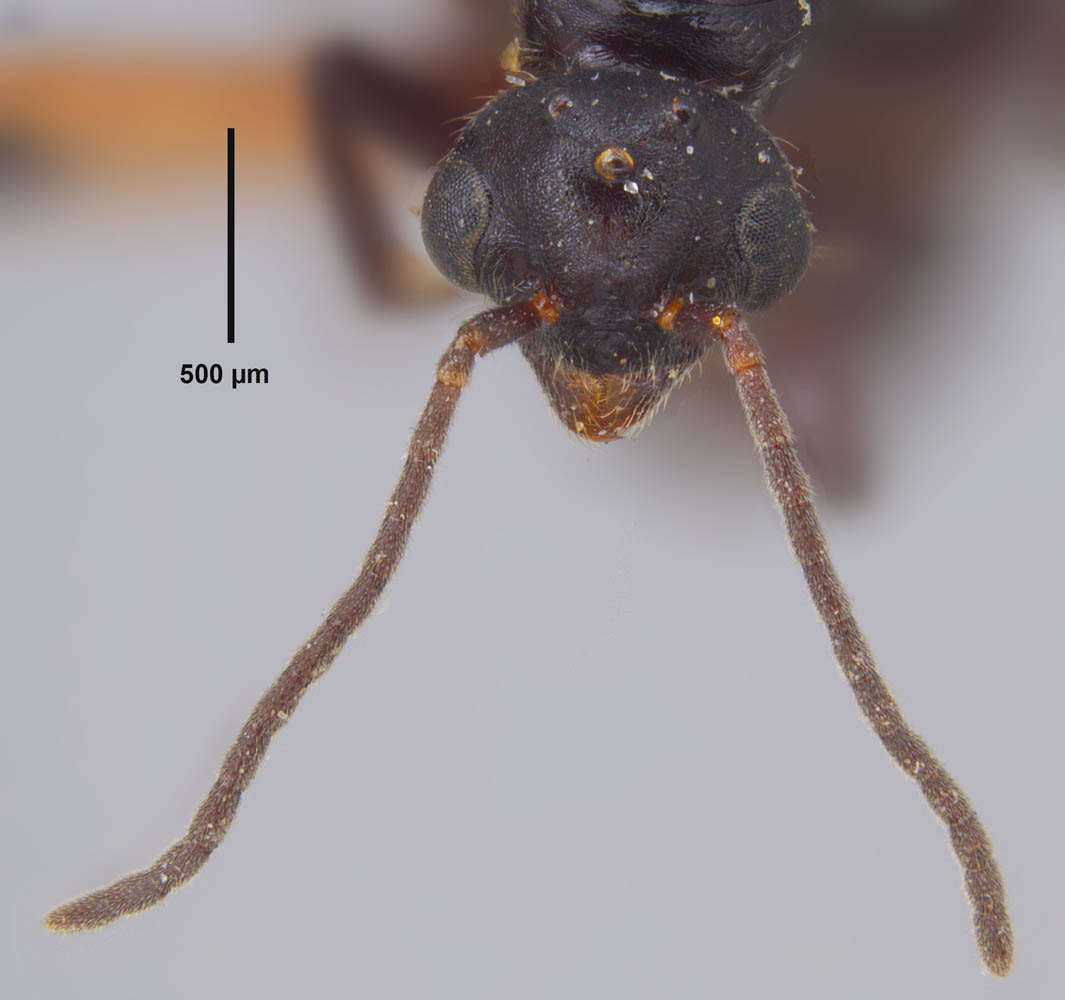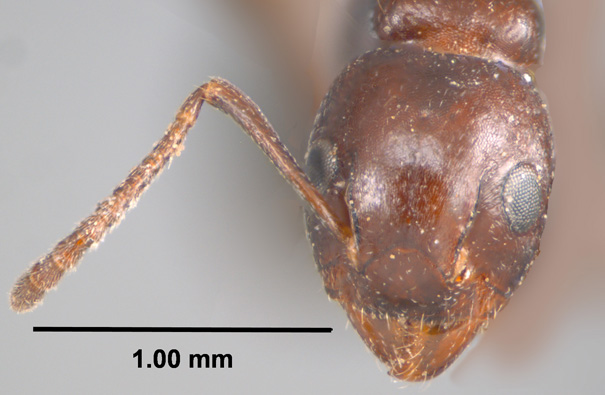Subfamily DOLICHODERINAE By Joe A. MacGown, Uploaded 2009, last updated 18 December 2015 |
||
Dolichoderus taschenbergi, full face view of the head of a worker, Oktibbeha Co., MS (Photo by James Lewis and Joe A. MacGown) |
Dolichoderus taschenbergi, lateral view of a worker, Oktibbeha Co., MS (Photo by James Lewis and Joe A. MacGown) |
Dolichoderus taschenbergi, dorsal view of a worker, Oktibbeha Co., MS (Photo by James Lewis and Joe A. MacGown) |
Dolichoderus taschenbergi, full face view of the head of a male, Oktibbeha Co., MS (Photo by James Lewis and Joe A. MacGown) |
Dolichoderus taschenbergi, lateral view of a male, Oktibbeha Co., MS (Photo by James Lewis and Joe A. MacGown) |
|
 |
||
Dolichoderus taschenbergi, frontal view of the head of a worker. |
Dolichoderus taschenbergi, side view of a worker. | |
Introduction Taxonomic History (provided by Barry Bolton, 2015) Hypoclinea taschenbergi Mayr, 1866: 498 (w.) U.S.A. Nearctic. Identification Biology and Economic Importance Distribution Literature Cited Creighton, W. S. 1950. The ants of North America. Bulletin of the Museum of Comparative Zoology 104:1-585. Emery, C. 1894. Studi sulle formiche della fauna neotropica. VI-XVI. Bullettino della Società Entomologica Italiana 26:137-241. Francoeur, A.; Elias, S. A. 1985. Dolichoderus taschenbergi Mayr (Hymenoptera: Formicidae) from an early Holocene fossil insect assemblage in the Colorado Front Range. Psyche (Cambridge) 92:303-307. Johnson, C. 1989. Identification and nesting sites of North American species of Dolichoderus Lund (Hymenoptera: Formicidae). Insecta Mundi 3:1-9. MacKay, W. P. 1993. A review of the New World ants of the genus Dolichoderus (Hymenoptera: Formicidae). Sociobiology 22:1-148. Mayr, G. 1866a. Myrmecologische Beiträge. Sitzungsberichte der Kaiserlichen Akademie der Wissenschaften in Wien. Mathematisch-Naturwissenschaftliche Classe. Abteilung I 53:484-517. Mayr, G. 1886. Die Formiciden der Vereinigten Staaten von Nordamerika. Verhandlungen der Kaiserlich-Königlichen Zoologisch-Botanischen Gesellschaft in Wien 36:419-464. Shattuck, S. O. 1994. Taxonomic catalog of the ant subfamilies Aneuretinae and Dolichoderinae (Hymenoptera: Formicidae). University of California Publications in Entomology 112:i-xix, 1-241. Smith, D. R. 1979. Superfamily Formicoidea. Pp. 1323-1467 in: Krombein, K. V.; Hurd, P. D.; Smith, D. R.; Burks, B. D. (eds.) 1979. Catalog of Hymenoptera in America north of Mexico. Volume 2. Apocrita (Aculeata). Washington, D.C.: Smithsonian Institution Press, pp. i-xvi, 1199-2209. Smith, M. R. 1951c. Family Formicidae. Pp. 778-875 in: Muesebeck, C. F.; Krombein, K. V.; Townes, H. K. (eds.) 1951. Hymenoptera of America north of Mexico. Synoptic catalogue. United States Department of Agriculture. Agriculture Monograph 2:1-1420. Wheeler, G. C.; Wheeler, J. 1966. Ant larva of the subfamily Dolichoderinae: supplement. Annals of the Entomological Society of America 59:726-732. Links |
||








